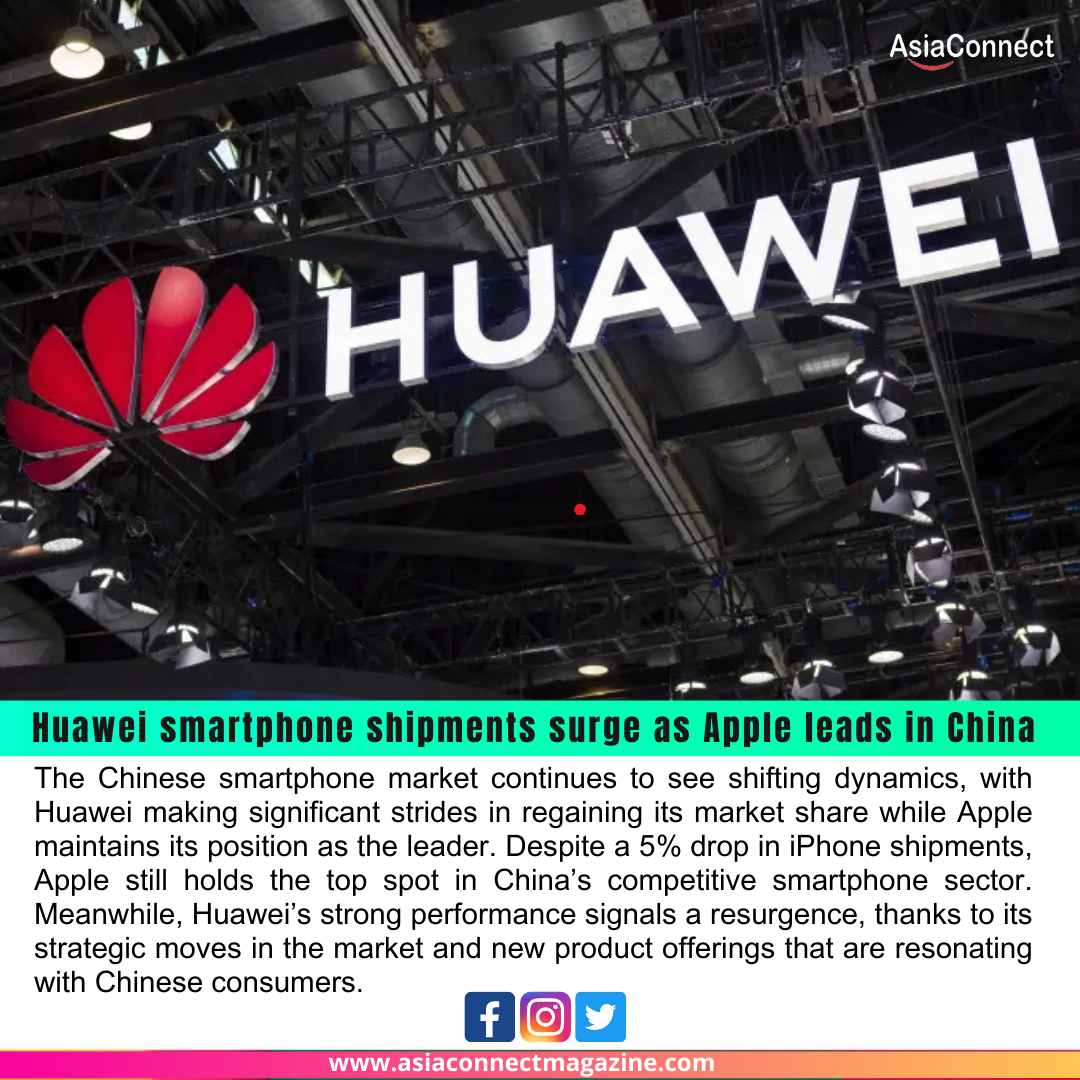The Chinese smartphone market continues to see shifting dynamics, with Huawei making significant strides in regaining its market share while Apple maintains its position as the leader. Despite a 5% drop in iPhone shipments, Apple still holds the top spot in China’s competitive smartphone sector. Meanwhile, Huawei’s strong performance signals a resurgence, thanks to its strategic moves in the market and new product offerings that are resonating with Chinese consumers.
Apple’s Decline in Shipments
According to the latest industry reports, Apple experienced a 5% drop in iPhone shipments in China, reflecting the challenges it faces in a market that has become increasingly competitive. While Apple remains the market leader in China, the decline in shipments is notable as it signals shifting consumer preferences and the rise of local competitors. Apple’s dominance has been challenged in recent years by a combination of factors, including economic pressures, competition from domestic brands, and supply chain disruptions.
Despite the shipment drop, Apple retains its top position in the Chinese smartphone market, which remains one of the most important markets for the company globally. The iPhone continues to be a premium product in China, particularly among consumers looking for high-quality, reliable smartphones. Apple’s brand loyalty and ecosystem of devices and services have helped it maintain a leading position, but it will need to address the changing dynamics of the market to sustain this lead.
Huawei’s Resurgence
On the other hand, Huawei, which has faced significant challenges in the last few years due to US sanctions and its impact on the availability of critical components, has been able to regain ground in the Chinese market. Huawei’s shipments have surged, driven by the release of new smartphones that cater to both premium and mid-range market segments.
The company has focused on strengthening its presence in the domestic market by offering smartphones with strong performance, innovative features, and competitive pricing. Huawei has also made efforts to reduce its reliance on foreign components by accelerating the development of its own technology, including processors and operating systems. These efforts have allowed Huawei to weather some of the external pressures and continue to cater to the demands of Chinese consumers.
Huawei’s resurgence in the Chinese smartphone market is a sign of its ability to adapt to a rapidly changing landscape. The company’s products have been well-received in the market, particularly its latest devices, which come equipped with advanced camera technology, 5G capabilities, and high-performance specifications. Huawei’s strong brand presence and focus on local consumer needs have played a key role in its recovery, helping it once again become a strong competitor to Apple in China.
Challenges and Opportunities for Both Companies
Both Apple and Huawei face unique challenges and opportunities in China’s smartphone market. Apple’s challenge lies in maintaining its premium brand image while navigating a highly competitive market. The rise of domestic competitors such as Xiaomi, Oppo, and Vivo, along with the increasing demand for more affordable smartphones, places pressure on Apple to adapt its pricing and marketing strategies.
For Huawei, the main challenge is to continue recovering from the impact of US sanctions and maintain its position in both the domestic and international markets. Despite these challenges, the company’s strong recovery in China presents a promising opportunity for growth, particularly as it focuses on innovation and local market needs.
Conclusion
The Chinese smartphone market remains a battleground for global players, with Apple holding the top spot despite a slight decline in iPhone shipments. Huawei’s surge in smartphone shipments signals a recovery and a return to prominence in the domestic market. As both companies navigate the changing landscape, their ability to innovate and adapt to consumer preferences will be key in determining their future success in China’s competitive smartphone sector.





